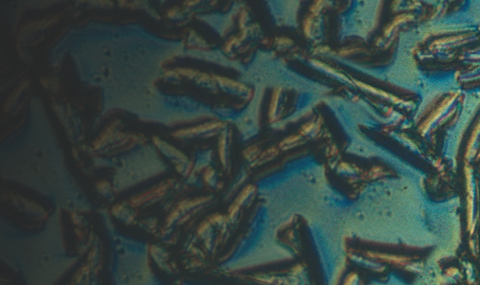Microbes such as bacteria and yeast are able to maintain a narrow distribution of cell sizes by regulating the timing of cell divisions. In rich nutrient conditions, bacteria such as E. coli divide faster than their chromosomes replicate (!), implying that cells maintain multiple ongoing rounds of chromosome replication. How these processes are coupled and controlled is a fundamental question in cellular biology. We have shown that ideas from statistical physics are helpful in deciphering this problem, and in particular lead to insights into the structure of the correlations between cell cycle parameters. The models also account for the tight coupling between size control and DNA replication. Results on budding yeast and archaea show similar behavior, suggesting that the principles involved may be prevalent in nature across different domains of life - for reasons yet to be elucidated.
Relevant publications:
[1] Cell size regulation in bacteria, Ariel Amir, Physical Review Letters 112, 208102 (2014), highlighted in Physics 7, 55 (2014).
[2] Stochastic modeling of cell growth with symmetric or asymmetric division, Andrew Marantan and Ariel Amir, Physical Review E 94, 1, 012405 (2016).
[3] Details matter: noise and model structure set the relationship between cell size and cell cycle timing, Felix Barber, Po-Yi Ho, Andrew Murray and Ariel Amir, in special issue of Frontiers in Cell and Developmental Biology on "Determinants of Cell Size", 5, 92 (2017).
[4] Modeling cell size regulation: From single-cell level statistics to molecular mechanisms and population level effects, Po-Yi Ho, Jie Lin and Ariel Amir, invited review for Annual Review of Biophysics, 47, 251 (2018).
[5] Learning from noise: how observing stochasticity may aid microbiology, Ariel Amir and Nathalie Q. Balaban, invited review for special issue of Trends in Microbiology on "Broad concepts in microbiology", 26, 374 (2018).
[6] Single-cell analysis of growth in budding yeast and bacteria reveals a common size regulation strategy, Ilya Soifer, Lydia Robert and Ariel Amir, Current Biology, 26, 3, 356 (2016).
[7] Archaeal cells share common size control with bacteria despite noisier growth and division, Ye-Jin Eun, Po-Yi Ho, Minjeong Kim, Lars Renner, Salvatore LaRussa, Lydia Robert, Amy Schmid, Ethan Garner, and Ariel Amir, Nature Microbiology, 3, 148 (2018) [cover article].
[8] Cell-size regulation in budding yeast does not depend on linear accumulation of Whi5 Barber, Felix, Ariel Amir and Andrew W. Murray, Proceedings of the National Academy of Sciences 117, 25, 14243 (2020).
[9] Simultaneous Regulation of Cell Size and Chromosome Replication in Bacteria, Po-Yi Ho and Ariel Amir, invited article for special issue of Frontiers of Microbiology on The Bacterial Cell: Coupling between Growth, Nucleoid Replication, Cell Division and Shape", 6, 662 (2015).
[10] Interrogating the Escherichia coli cell cycle by cell dimension perturbations, Hai Zheng, Po-Yi Ho, Meiling Jiang, Bin Tang, Weirong Liu, Dengjin Li, Xuefeng Yu, Nancy E. Kleckner, Ariel Amir and Chenli Liu, Proceedings of the National Academy of Sciences 113, 52, 15000 (2016).
[11] Is cell size a spandrel?, Ariel Amir, eLife, 6, e22186. (2017).
[12] A Parallel Adder Coordinates Mycobacterial Cell-Cycle Progression and Cell-Size Homeostasis in the Context of Asymmetric Growth and Organization, Michelle M. Logsdon, Po-Yi Ho, Kadamba Papavinasasundaram, Kirill Richardson, Christopher M. Sassetti, Ariel Amir and Bree B. Aldridge, Current Biology 27, 21, 3367-3374 (2017).
[13] A mechanistic model of the regulation of division timing by the circadian clock in cyanobacteria, Po-Yi Ho, Bruno MC Martins and Ariel Amir, Biophysical Journal 118, 12, 2905 (2020).
[14] Coupling between DNA replication, segregation, and the onset of constriction in Escherichia coli, Tiruvadi-Krishnan, S., Männik, J., Kar, P., Lin, J., Amir, A. and Männik, J., Cell reports, 38 (12), p.110539 (2022).
[15] Using conditional independence tests to elucidate causal links in cell cycle regulation in Escherichia coli. Proceedings of the National Academy of Sciences, Kar, P., Tiruvadi-Krishnan, S., Männik, J., Männik, J. and Amir, A., 2023. , 120(11), p.e2214796120 (2023).


